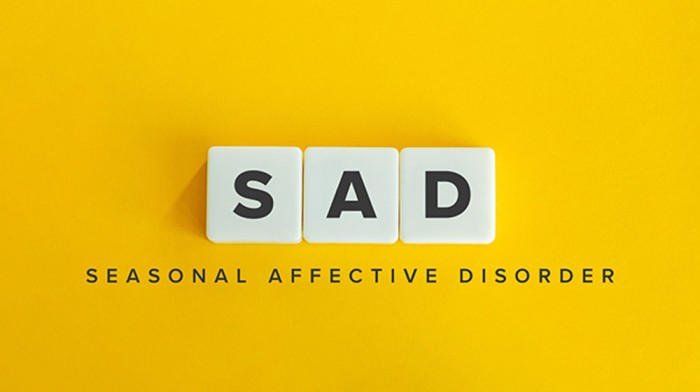
Seasonal Affective Disorder (SAD) is more than just “feeling down” as the days are shorter in the winter. It is a type of depression with a recurrent seasonal pattern, the most common being “winter SAD,” according to Sabine Schmid, PhD, LP, a clinical psychologist with University of Minnesota Physicians (M Physicians). Her expertise is in cognitive psychology with a focus on mood disorders, ADHD, obsessive-compulsive disorder and stress anxiety disorders.
Understanding SAD as a specific kind of depression is important, especially amid myths that say it is only minor and caused by a “bad attitude.”
What is SAD?
“Unlike the winter blues, SAD is a type of major depressive disorder,” she says. “It is characterized by serious mood changes and often affects how people feel, think and act.”
Meeting full criteria for a major depressive disorder, SAD can be debilitating and often occurs with other physical and mental health conditions such as substance abuse and risk of self harm.
“It’s caused by neurochemical changes in the brain,” Dr. Schmid explains. “People don’t cause SAD, and they cannot simply shake it off.”
SAD Symptoms
Symptoms typically start in the late fall or early winter and subside during the spring and summer.
Signs that you, a family member or a friend are experiencing SAD may include:
- Feeling down most of the day
- Losing interest in activities
- Feeling hopeless
- Trouble concentrating
- Decrease in energy or oversleeping
- Cravings for carbohydrates
- Weight gain
- Social withdrawal
Treating SAD
Dr. Schmid says that there are a number of treatments for SAD that mental health professionals may recommend and prescribe, which can include:
- Lifestyle changes
- Light therapy under professional guidance, which is often covered by insurance
- Cognitive Behavior Therapy (CBT), which is a type of psychotherapy proven effective for treating SAD
- Antidepressant medications and Vitamin D supplements as prescribed by a mental healthcare provider
Dr. Schmid encourages anyone who suffers from seasonal depression to seek professional help. “SAD is a psychiatric disorder which can cause significant distress, persist for months, and return every year. ”
“A positive factor in the treatment is that SAD is predictable,” Dr. Schmid notes. “Those with known SAD should consult a mental health professional about when to start treatment to help minimize symptoms.”